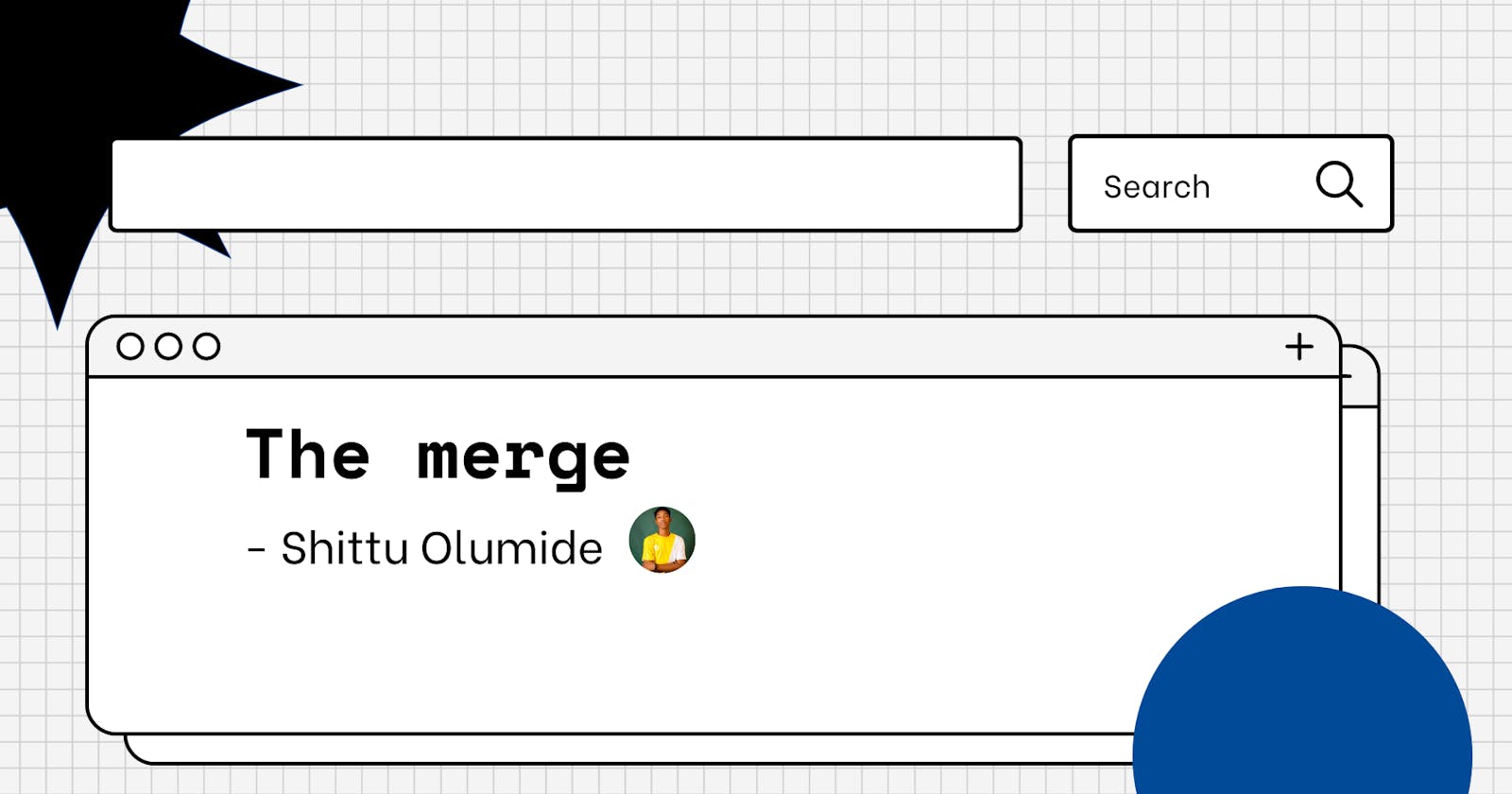The Merge
The Merge is the most significant update to Ethereum since its launch in 2015
If you are pretty conversant with the blockchain and the web3 space in general, I am quite sure you would have heard the phrase "the merge" a couple of times. Everybody in the space is talking about it, it is the buzzword that found its way into the heart and mouths of everybody.
A lot of people were excited about the announcement of the merge, and also there were so many speculations, questions, and alarms raised during this period too because it will mark the very end of the proof-of-work Ethereum we know today and give birth to Ethereum 2.0 which is the version that will be based on a proof-of-stake consensus algorithm.
Let's quickly look into the Ethereum merge, the reason for the merge, some risks associated with the merge, and finally the Ethereum 2.0.
The Merge
Proof-of-stake is used on the Ethereum Mainnet, but it wasn't always the case. The merge is the name of the transition from the original proof-of-work system to proof-of-stake. The Beacon Chain and the original Ethereum mainnet have merged to form a single proof-of-stake chain, known as the merge.
On September 15, 2022, the merge took place. The formal deprecation of proof-of-work and a 99.95% decrease in energy consumption, brought about the rise of Ethereum 2.0 and the completion of Ethereum's switch to proof-of-stake consensus. New proof-of-stake (PoS) validator nodes, which cost 32 ETH to join, have been added to the blockchain as a whole. The availability of ether tokens to investors will not change in any way, and Ethereum-based apps should continue to function as usual.
Reasons for the Merge
There are a number of reasons behind the Ethereum transition from PoW to PoS, and these include:
- By lowering the hardware requirements for node operators, more decentralization will be achieved.
- Reduction in energy usage by node validators by 99%+ making it more environmentally friendly.
- Quicker confirmations of transactions (though overall speed will be about the same).
- Adding additional scaling solutions, for example, sharding.
- Enhanced security through a diversified client.
Risks associated with the Merge
The Ethereum Merge poses a number of risks because it is the largest update to a cryptocurrency blockchain network to date. The following are some of the dangers of the Ethereum Merge:
- Centralization and governance risk is the first risk.
- Drop in the ETH price.
- Staked ETH centralization.
- Denial-of-Service (DoS) attacks.
How does the Merge affect you?
If you own cryptocurrency assets, you generally don't need to take any action. But for individuals who are interested in cryptocurrencies, this might offer a more environmentally friendly option and might have an impact on their prices.
The Ethereum 2.0
The Ethereum 2.0 (also known as ETH2) enhancements aim to make the cryptocurrency substantially faster, cheaper, and more scalable. Participants may stake ETH tokens as part of the update to aid in network security. Participants earn rewards on their staked ETH in return for staking. Until Ethereum 2.0 is fully launched, which many experts predict will occur between 2022 and 2024, staked ETH (and prizes) cannot be unstaked.
Conclusion
We have finally come to the of this short but educative article, we covered the important areas around the merge, the reasons for the merge, the risk associated with it, and lots more. But just to be clear, ETH 2 is not a new cryptocurrency (it simply refers to the new PoS blockchain that will go live as Ethereum's main blockchain network after the merge.), ETH will remain the only Ethereum native cryptocurrency.

